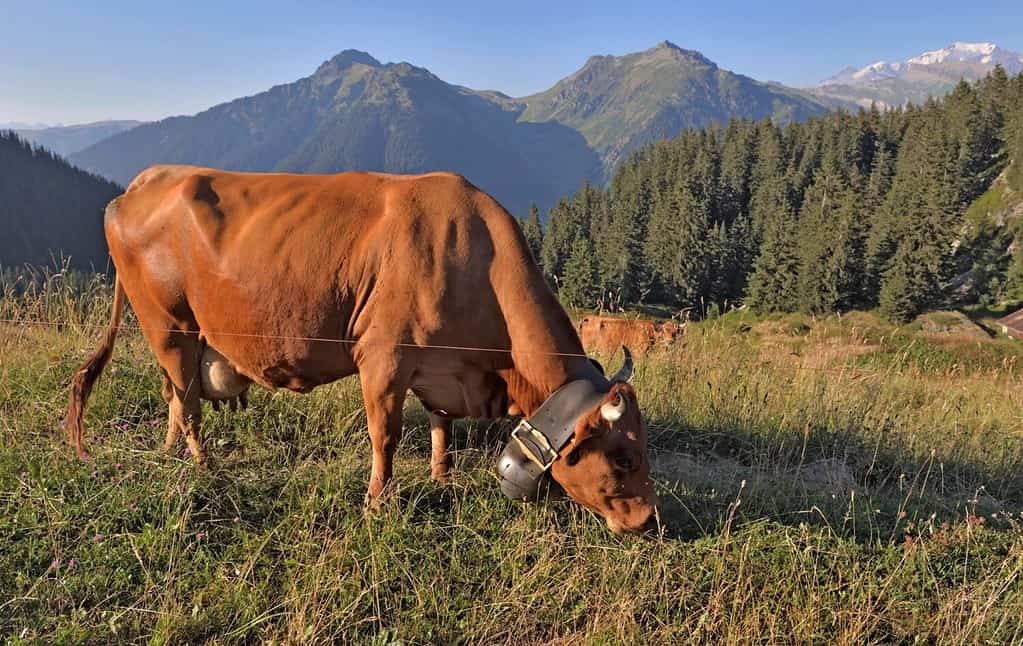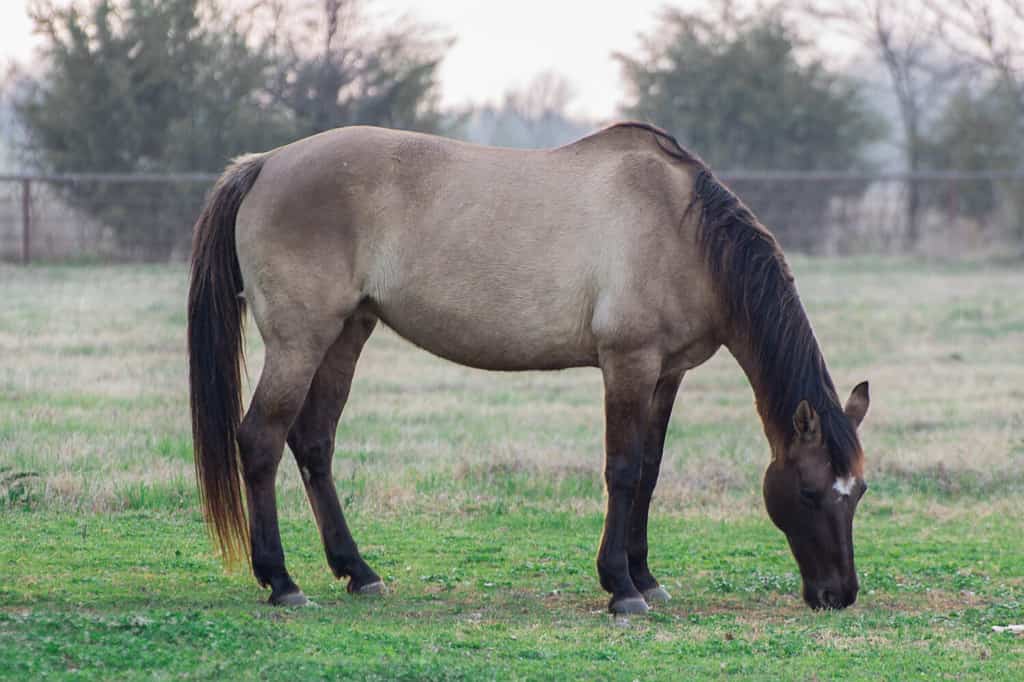Grazing is an animal behavior. It is a feeding strategy of an herbivore, where it feeds on low-growing plants, like grass and algae.
Summary

herbivorous animals employ a grazing feeding strategy, which is beneficial in more ways than one
©sanddebeautheil/Shutterstock.com
Grazing in zoology is a feeding method for many herbivorous animals large and small. There are several different types of grazing animals. Graminivores are those that feed primarily on true grasses and pseudoruminants are animals with multi-chambered stomachs who do not chew the cud. There are also animals that reingest partly digested pellets (coprophagia) and those that graze on plants other than grass.
In agriculture, grazing is a strategic method used by farmers. This method of animal husbandry allows livestock to freely roam and consume wild vegetation on unsuitable land in order to repurpose indigestible plant matter into products, like milk, meat, and wool.
Examples of Grazing Animals

Grazing animals feed on low-growing plants
©Emily L/Shutterstock.com
Some of the most common examples of grazing animals include domestic livestock, such as cattle, sheep, horses, ponies, and goats.
Examples of graminivores: red kangaroos, horses, capybaras, cattle, guinea pigs, hippos, giant pandas, dogs, bison, cats, and grasshoppers.
Examples of coprophagia (those that graze on feces): flies, dung beetles, butterflies, rabbits, hares, and dogs
Examples of pseudoruminants: hippos, rhinos, horses, rabbits
Non-grass grazing: sea urchins, aquatic snails, crustaceans
Grazing Benefits
Grazing may seem like a simple business in the animal world, but it is much more complex. Grazing animals contribute to biodiversity by eliminating dead grass, which brings more birds, and by allowing the same types of grasses to grow, lending to efficiency for the farmer. The feces and urine of grazing animals also recycle plant nutrients back into the soil, which combats soil erosion and gives nutrition to insects and other organisms.



